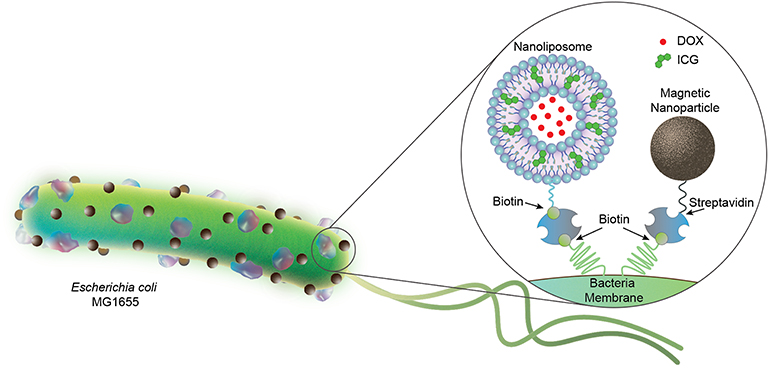Scientists at the Max Planck Institute for Intelligent Systems in Germany have developed tumor-targeting microrobots using bacteria. The team exploited the tendency of bacteria to naturally gravitate towards areas of low oxygen and low ph, which both tend to occur in the vicinity of a tumor. Once near the tumor, the bacteria aggravate the immune system, with the tumor experiencing some collateral damage. However, the researchers also turbo-charged the ability of the bacteria to target the tumor by binding magnetic nanoparticles to their surface, letting them control bacterial movement using magnetic fields. If that wasn’t enough, they also attached light-sensitive drug-loaded nanoliposomes onto the bacterial surface, allowing them to illuminate the tumor with near-infrared light when the bacteria are nearby, triggering anti-cancer drug release and further damaging the tumor.
Using bacteria to target tumors may seem a little bizarre, but when you consider the characteristics of bacteria it make a lot of sense. They are highly motile swimmers, and can navigate various environments including flowing blood in the vasculature and even dense tissues. They are also naturally attracted to areas of low oxygen and high acidity in the body, both of which tend to occur near tumors. They also tend to aggravate the immune system, which can be beneficial if it also results in some tumor cells being destroyed along with them.
However, researchers have been attempting to make bacteria even more effective as anti-tumor agents by equipping them with greater targeting and tumor-destroying abilities. This latest approach illustrates this concept quite well. “Imagine we would inject such bacteria-based microrobots into a cancer patient’s body. With a magnet, we could precisely steer the particles towards the tumor. Once enough microrobots surround the tumor, we point a laser at the tissue and by that trigger the drug release. Now, not only is the immune system triggered to wake up, but the additional drugs also help destroy the tumor,” said Birgül Akolpoglu, a researcher involved in this latest study. “This on-the-spot delivery would be minimally invasive for the patient, painless, bear minimal toxicity and the drugs would develop their effect where needed and not inside the entire body.”

So far, this team has managed to fine tune their technique so that they can equip a high percentage of bacteria in a sample with both nanoliposomes and magnetic nanoparticles. They also showed that they could use magnetic fields to steer the bacteria through narrow channels that are intended to mimic the vasculature.
“Bacteria-based biohybrid microrobots with medical functionalities could one day battle cancer more effectively. It is a new therapeutic approach not too far away from how we treat cancer today,” said Metin Sitti, another researcher involved in the study. “The therapeutic effects of medical microrobots in seeking and destroying tumor cells could be substantial. Our work is a great example of basic research that aims to benefit our society.”
Studies in Science Advances: Magnetically steerable bacterial microrobots moving in 3D biological matrices for stimuli-responsive cargo delivery
